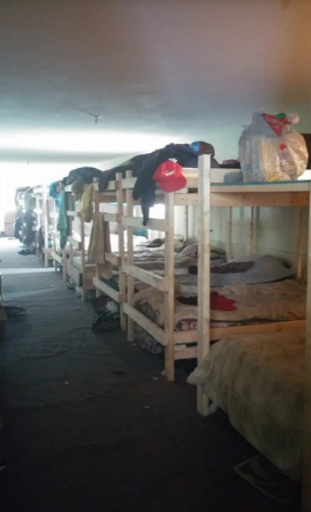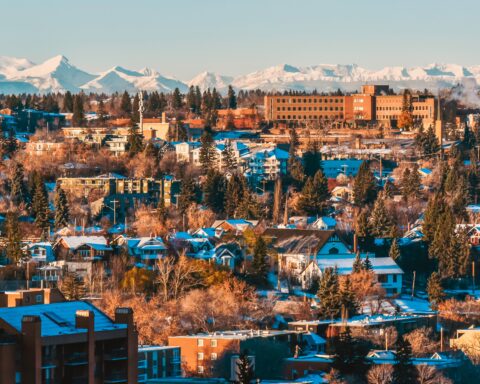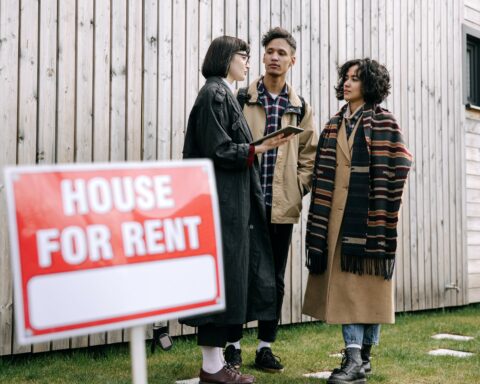Less than two years after arriving in Canada from India as an international student, Ritika Dubey will be moving for the fifth time this September in search of a more suitable and affordable apartment. She can still remember sitting in an Oakville Subway restaurant a few days after arriving in 2019 and crying at the realization she was in one of the most expensive cities in the world and knew no one to turn to for help.
“I was scared, and I was alone,” she told NCM. The 24-year-old, who’s now working as a full-time journalist, is still struggling to find stable housing. “If you don’t know anyone, people will exploit you,” she said. “People know the difficulties we face and are able to exploit us.”
Akrit Michael, 24, also from India, is considering moving to Halifax in September from his current room in Oakville, Ontario so that he can attend in-person classes there since the COVID-19-related restrictions in the province are slowly easing. That will be his fifth move since arriving in 2019 to study journalism. At one point during the beginning of the pandemic, he had even been asked to vacate his $600/month-room to make way for the landlord’s family.
“Accommodation for an international student is especially a point of anxiety,” he said in a phone interview. “For me…it was always a point to keep my accommodation costs at a minimum because of the huge international tuition that I was already paying.”
Ashlynn Ashita Chand, 23, born in Canada, and her Indian parents who immigrated from Fiji in the 1990s, have had their homes repossessed twice by the bank in the last two years. Both times, mortgage arrears were the reason: first due to a failed business they’d bought four years ago; then by the difficulties imposed by the pandemic. Before that, her parents had lived in three different places – smaller apartments in poorer neighbourhoods – while saving money to build their home “from the ground up.” So, having had their first “dream home” in Canada repossessed was a “very emotional experience,” Chand said over Facebook Messenger. “My mom felt incredibly depressed after losing the home, and she works 70 (hours) a week trying to pay rent… It’s also a very dehumanizing experience to be evicted.”
In all three cases, each reported feeling their ethnicity as a factor for either overbearing rules such as limiting kitchen access and imposed curfews, or, in the case of Chand, realtors’ outright refusal to show them certain neighbourhoods. Dubey even stayed at a place where the landlord refused to give her a contract.
These stories are much too common across Canada, particularly among racialized newcomers, and are happening amid a housing and rental market bonanza providing investors with obscene returns.
‘An Absolute Travesty’
“Housing is no longer affordable for average people, and governments have gotten out of the business of providing it for those who can’t provide it for themselves,” Alyssa Brierley, executive director of the Centre for Equality Rights in Accommodation (CERA), told NCM.
“And that’s an absolute travesty.”
COVID-19 has only made it worse.
According to the Canadian Housing and Mortgage Corporation’s (CHMC) 2020 Rental Market Report, the vacancy rate increased 1.2 per cent in 2020 (to 3.2 per cent), while rent for an average two-bedroom apartment increased by 3.6 per cent (to $1,165).
A February report from CERA states that 46 per cent of tenants reported not being able “to pay next month’s rent unless they keep working” in 2020, and 67 per cent who, between May and June of that year, reported having gone “at least a full day without eating.”
Women accounted for 63 per cent of job losses in March of 2020. Women, Black and Indigenous people were also at a higher risk of falling into poverty, being unable to pay rent and becoming homeless.
According to the CMHC, 58.3 per cent of people reported a higher arrears rate in 2020 than the year before. Overall, 116,929 apartment units were in arrears out of a total 1,912,290 units, representing approximately $150 million. Nationally, “Toronto recorded the highest arrears rate, with 10.68 per cent of units (34,858)… and 0.92 per cent of rent (approximately $55 million) in arrears,” its report states.
For its part, CERA’s report urges the federal government to provide “targeted support of rental assistance…where rents are exorbitant.”
“If nothing changes, once the processes start moving again, there are going to be a lot of people facing the loss of their home,” said Brierley. “So, what we propose is a targeted financial support benefit for people based on the (increase) to their rent-to-income ratio during the pandemic.”
Applicants would qualify if either A) their gross 2020 income is less than CMHC’s Housing Income Limit; or B) where the 2020 rent-to-income ratio is greater than the 2019 ratio.
Housing Discrimination
Racialized newcomers are also more susceptible to experience discrimination when looking for housing.
Dubey, the 24-year-old journalist from Delhi, said she was lucky she lived with a family from Pakistan for over a year, as they were “open and accepting” of other cultures.
But others “try to take advantage of you, and they wouldn’t be interested in keeping an Indian person,” she said.
In its 2019-2020 report, the Human Rights Tribunal of Ontario (HRTO) reported nine per cent of applications were for housing related matters – an increase of one per cent since 2017. There were also applications for discrimination based on race (25 per cent), colour (18 per cent), ethnic origin (18 per cent) and place of origin (14 per cent).
According to the Human Rights Legal Support Centre, which assists Ontarians with human rights cases, in 2020-21, there was a 3.8 per cent increase in the number of housing discrimination calls they received, for a total of 2,117.
Douglas Kwan is the director for advocacy and legal services at Advocacy Centre for Tenants Ontario (ACTO) and previously worked in Mississauga, a highly racialized community in Ontario, as a lawyer representing tenants for about 15 years. He says one of the most common issues newcomers face is being asked as much as “a full year’s rent as a deposit.”
“The (Residential Tenancies Act) says a landlord can’t ask for more than one month,” he told NCM. “But we’ve seen landlords…(and) real estate agents acting on behalf of landlords, asking for more than one month.”
Michael, the 24-year-old journalism student moving to Halifax, was asked to wire $1,300 – two month’s rent – before leaving India for a one-bedroom apartment he described as “basically the size of a den.”
An Instrument of Exploitation
Most people who come to Canada do so as non-immigrants – meaning they come with student visas or work permits under programs that offer no pathway to residency, says Chris Ramsaroop, an organizer with Justice for Migrant Workers. In an op-ed in the Toronto Star, Armine Yalnizyan, the Atkinson Fellow on the Future of Workers, estimates that for every permanent resident arriving in Canada, “almost three temporary residents were admitted to work or study.” Only about 28 per cent of the people entering Canada are permanent residents.
“Over the last couple of decades…we’ve seen a transition where more people are coming as non-immigrants, as non-residents, only for the purpose of being here for temporary reasons,” Ramsaroop said.
Of all the communities NCM examined, the plight of temporary foreign workers may be the worst.

Most Temporary Foreign Workers (TWF), for instance, are agricultural farm workers and those who come under the “low-skill” category – in itself “an instrument for businesses to exploit workers,” said Ramsaroop.
“The right to housing for temporary foreign workers…is denied because of the control that the employers have over the working conditions, the housing conditions, and (because of) the tied (work) permits,” he told NCM. “They live in employer-provided housing and don’t have rights to contest evictions or deplorable conditions.”
Often, dozens of workers are cramped into bunkhouses where they’re forced to sleep in bunk beds with shared washrooms and poor ventilation. Workers reportedly avoid going home as long as possible because of the mistreatment they receive. They’ve even been forced to live in garages which swelter in the summer and freeze in the winter.

According to Ramsaroop, there is no law governing employer-provided housing and therefore no real oversight or enforcement powers to protect workers.
During the pandemic, these workers have been completely unprotected “from COVID outbreaks or other occupational hazards” since Ontario’s Occupational Health and Safety Act does not apply to them either, he said.
Ramsaroop said the only semblance of oversight are toothless “guidelines” that are not even enforceable, and which are left to municipal public health units to enact.
That’s why while some Temporary Foreign Workers have the option to live in employer-provided housing, such as those in the agricultural stream, many prefer to try their luck on their own and put as much distance between them and their employers, “who exert total control” over their lives, he said.
Speaking up is not an option due to “fear of termination, fear of reprisals and finally fear of no longer being able to return to work once their contract ends,” Ramsaroop explained.
“This goes back (to) decades of neglect and underfunding. COVID has just been highlighting it all.”
Intervention Required
Nationally-focused reports like CERA’s, regional ones like ACTO’s November 2019 report and city-wide ones like the Wellesley Institute’s August 2020 report all tell the same catastrophic story.
The issue, says Brierley, is that governments constantly “play a game of hot potato” where each level passes responsibility on to the other, and as a result “the problem never gets solved.”
The federal government, she insists, must take the lead on supplying affordable housing rather than leaving it to the private sector. That approach has only resulted in “over 85 per cent…of the housing that people rent (being) somebody else’s investment vehicle.”
“For people to make profit over something that is a human right should inherently be limited by the fact that the most important thing is to make sure that everyone has access to the housing that they need,” she said.
According to a 2016 study published in ScienceDirect looking at the gentrification of Toronto, an influx of large real estate investment trusts (REITs), private equity funds and financial asset management firms into the family rental market has been the main driver of the mass displacement of people while they simultaneously “extract vast profits.”
“There’s a financial incentive for landlords to have a constant turnover of tenants so that the market rent that they’re receiving…is always at market level,” said Kwan.
This is a systemic problem rooted in decades of underfunding communities and allowing private speculative investors to make money from and “stand in direct opposition to…people’s human right to housing” and desperate search for it, said Brierley.
The fix, therefore, has to likewise be systemic. Government intervention is “absolutely what is needed.”
“We’ve effectively just witnessed a 30-year experiment in government pulling out of the housing market and leaving it to sort itself out, and we have seen a homelessness crisis absolutely explode…in the last decade,” she said.
“It’s not a pandemic phenomenon. It’s something that’s been going on for quite some time.”
Fernando Arce is a Toronto-based independent journalist originally from Ecuador. He is a co-founder and editor of The Grind, a free local news and arts print publication, as well as an NCM-CAJ member and mentor. He writes in English and Spanish, and has reported from various locations across Canada, Ecuador and Venezuela. While his work in journalism is dedicated to democratizing information and making it accessible across the board, he spends most of his free time hiking with his three huskies: Aquiles, Picasso and Iris. He has a BA in Political Science from York University and an MA in Journalism from Western University.





